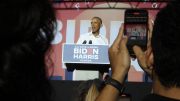By Laura Antunez
This year, Pride month began with nationwide protests against police brutality, many of them exposing police using excessive force against unarmed civilians, a coincidence that highlights the intertwined history of the Black community with the LGBT community decades ago.
The past week has been characterized by a nationwide uproar, occurring after George Floyd was brutally murdered at the hands of four police officers who were using excessive force, including having a knee pressed against his neck for over eight minutes.
Others before him such as Breonna Taylor, Ahmaud Arbery, and Tony McDade – a Black transgender man – have also been recent victims of brutality against Black people.
The ensuing protests have been largely covered and have shown police tear-gassing protestors and using rubber bullets. There has also been a large emphasis on police instigating the riots and provoking protestors to retaliate.
The Stonewall Riots that occurred in late June 1969 were of similar nature to the upheaval being shown today. When human beings are denied basic human rights based on factors they can’t control, the result, at times, is violent retaliation.
Both African-American and LGBT individuals shared both victories and defeats throughout the ’50s and ‘60s. Black people were facing segregation and the American Psychiatric Association had listed homosexuality as a form of mental disorder at the beginning of the 1950s.
Like today, protestors were falling victim to violence and provocation at the hands of the police. Stonewall began in the early hours of June 28, 1969, after several days of police tormenting and raiding bars that were known to be gay bars. Since homosexuality was illegal at the time except for in Illinois, it was the mafia who owned gay bars and paid off police to stay away.
Many who were fighting against the police were not just those in the LGBT community, but those that lived in the neighborhood that was tired of being witnesses to blatant discrimination.
There are many different accounts on exactly what happened, however, none have discredited Marsha P. Johnson for being one of the pivotal characters in the riots. Some witnesses have also identified Zazu Nova, believing she was the one to throw the initial brick at police.
Key figures in Stonewall such as Johnson and Nova embody the influence the Black community has had on LGBT history.
“Talking about pioneers like Marsha P. Johnson is incredibly important because we need to remember that it was people who fell at the intersections of experiencing racism, heterosexism, and cisgenderism who started the movement for LGBTQIA+ rights,” said Erica Friedman, Associate Director of LGBTQA Initiatives at FIU.
A common misconception is that Johnson threw the first brick at a cop, starting the riot, although she denied the claim on a podcast in 1987. Despite this, Johnson has reemerged as a hero and a face for the current Black Lives Matter Movement.
“Justice is when we recognize this history, include their stories in our retellings of history, and center the movement on those intersections, even if that means white gay people don’t gain additional privileges as quickly as they assume they would by leaving Black, brown, and/or trans bodies out and behind,” said Friedman. “There is no justice without justice for all.”






Be the first to comment on "What do the Stonewall Riots have in common with the current Black Lives Matter movement? Almost everything."